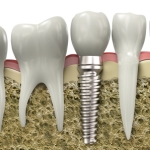
A new summary has just been added to the CRD Economic Evaluation Database (EED). The review contains a structured abstract of the methods and findings of a cost-effectiveness study of conventional approaches vs implants in root canal treatment.
This study evaluated the cost-effectiveness of available interventions to treat a maxillary incisor tooth with irreversible pulpitis damage, in men aged 35 to 85 years, in the UK.
The authors concluded that orthograde root canal treatment was cost-effective as first- and second-line choices; implants could be third choice.
It is unclear if the benefit assumptions were appropriate and what impact they had on the results. It is also unclear if the interventions were cost-effective, given the chosen measure of benefit.
